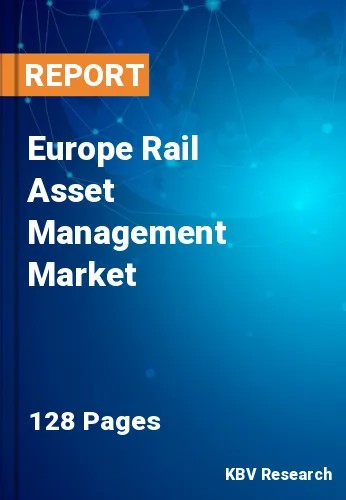The Europe Rail Asset Management Market would witness market growth of 5.5% CAGR during the forecast period (2021-2027).
With the help of technology like smart watches, smart glasses, and portable screens, field technicians can act on that information. Hands-free smart glasses, for example, can show a real-time augmented-reality version of a repair site, coupled with diagrams or instructional films. Voice-activated commands and controls, remote collaboration with specialists through audio or video conferencing, and intelligent lists with step-by-step directions for repair and maintenance are all possible with smart devices in the field. Real-time asset data can also be supplied into mass transit control systems, mobile work-order systems, delay predictors, rail energy optimization systems, and a variety of other intelligent systems that use powerful artificial intelligence to centralise operations and connect sensors to technicians.
Connected, intelligent devices enabled by the rail internet of things (IoT) may track rail assets in real time using camera drones, sensors, and other mobile technologies, and transferring the data into analytics systems for further processing. Having a network of devices that can monitor infrastructure in real time provides huge benefits for businesses dealing with ageing infrastructure, particularly in terms of maintenance, repair, and operations.
Infrastructure managers and railway undertakings have had to adopt a more business-like mentality as a result of European legislation: their management focus has switched from a technical approach to costs and performance. For many European infrastructure managers, this development resulted in a situation where stakeholders began to impose more stringent performance and cost requirements, forcing infrastructure managers to make new and transparent trade-offs in order to make the best decisions possible.
The Green Deal has emphasized the relevance of decarbonization: rail is far more ecologically friendly and energy efficient than other forms of transport, and it is yet capable of being even more so. It will be feasible to establish an integrated research and innovation programme by better understanding the interfaces & interactions among the components of the entire system, as well as their linkages with other modes.
The Germany market dominated the Europe Rail Asset Management Market by Country 2020, and would continue to be a dominant market till 2027; thereby, achieving a market value of $1,160.8 million by 2027. The UK market is anticipated to grow at a CAGR of 4.7% during (2021 - 2027). Additionally, The France market would showcase a CAGR of 6.3% during (2021 - 2027).
Based on Component, the market is segmented into Solution and Services. Further, the solution segment is bifurcated into Asset Performance Management (APM), Asset Planning & Scheduling, Workforce Management, Security, Analytics, Network Management, Incident Management, and Others. Based on Services, the market is segmented into Professional Services and Managed Services. Based on Deployment Type, the market is segmented into On-premise and Cloud. Based on Application, the market is segmented into Rolling Stock and Infrastructure. Based on countries, the market is segmented into Germany, UK, France, Russia, Spain, Italy, and Rest of Europe.
Free Valuable Insights: The Global Rail Asset Management Market Size will Hit $13.9 Billion by 2027, at a CAGR of 5.9%
The market research report covers the analysis of key stake holders of the market. Key companies profiled in the report include ALSTOM Holdings, Siemens AG, IBM Corporation, Hitachi, Ltd. (Hitachi ID Systems, Inc.), SAP SE, Cisco Systems, Inc., Capgemini SE, Accenture PLC, Wabtec Corporation, and Huawei Technologies Co., Ltd. (Huawei Investment & Holding Co., Ltd.)
By Component
By Deployment Type
By Application
By Country
Our team of dedicated experts can provide you with attractive expansion opportunities for your business.

